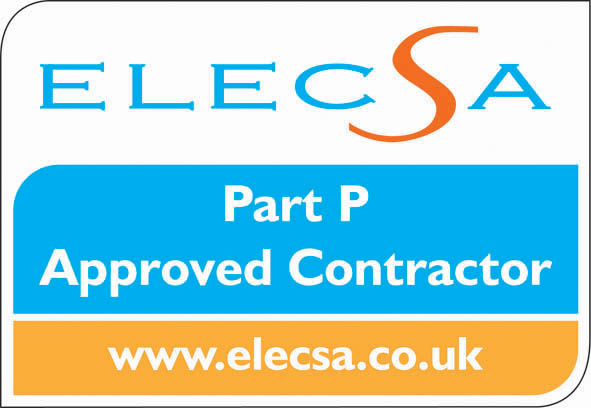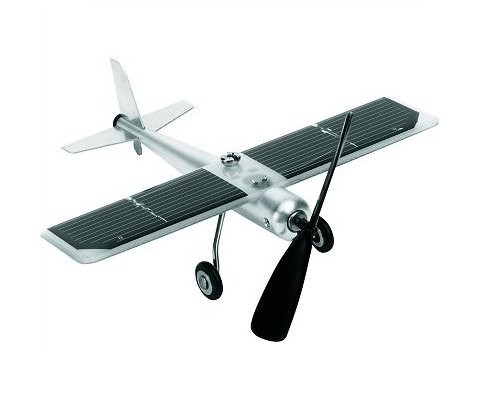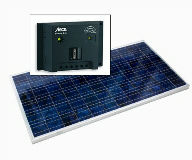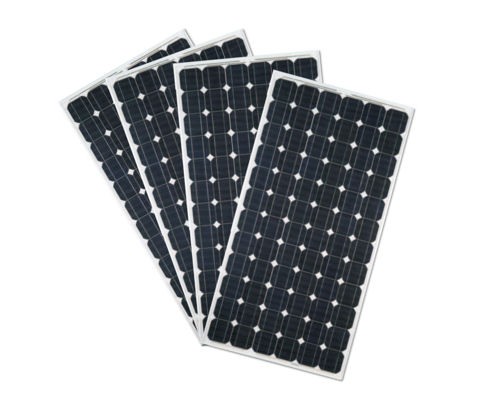Earn Money
Finally, you can earn real money from clean and free solar energy!
Grid-connected solar power
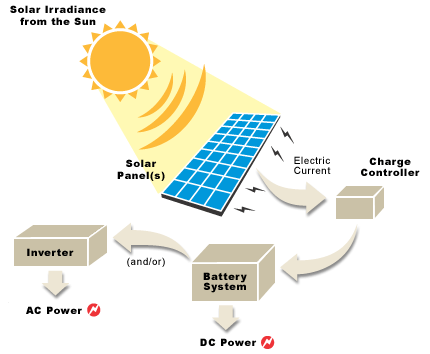 The cost of solar PV panels has fallen over the last few years, and solar photovoltaic arrays are now affordable for many households. Even better news is that you can now get government subsidies - the 'feed-in tariff' - for generating electricity with solar panels too. So as well as being environmentally friendly they are increasingly making good economic sense!
The cost of solar PV panels has fallen over the last few years, and solar photovoltaic arrays are now affordable for many households. Even better news is that you can now get government subsidies - the 'feed-in tariff' - for generating electricity with solar panels too. So as well as being environmentally friendly they are increasingly making good economic sense!
How a grid-connected solar PV system works
A grid connected solar system is really very simple. An array of solar panels is fixed somewhere where it receives good sunlight - usually on your roof, although ground-mounted panels in the garden may also be worth considering where you do not have a suitable roof.
Solar panels produce DC (direct current) electricity, which is ideal for charging batteries but will not power your household appliances. So a device called an inverter is then used to convert the DC electricity into 240 volts AC (alternating current). The inverter connects to the mains supply via a meter which monitors the total energy produced by the array.
Grid-connect inverters are quite sophisticated (and hence expensive) because they have a number of safety features, and have to ensure that the waveform generated matches precisely the waveform of the electricity of the national grid to which it is being connected.
Converting Sunlight into Electricity
Sun light striking a solar panel causes the electrons inside the panel to flow, creating electricity. Solar power generating systems take advantage of this property to convert sunlight directly into electrical energy.
Solar panels produce direct current (DC), which goes through a power inverter to become alternating current (AC)
electricity that we can use in the home or office, like that supplied by your utility power company.
There are two types of solar power generating systems: grid-connected systems, which are connected to the Electricity company infrastructure; and
stand-alone systems
, which feed electricity to a facility for immediate use, or to a battery for storage.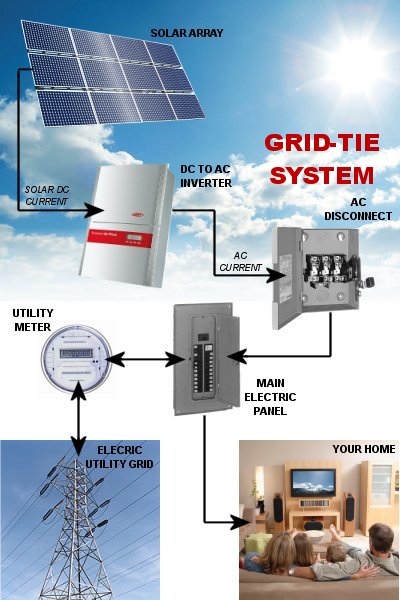
Grid-connected systems are used for homes, public facilities such as schools and hospitals, and commercial facilities such as offices and shopping centres. Electricity generated during the daytime can be used right away, and the surplus electricity can be sold to the Electric utility power company. If the system doesn’t generate enough electricity the electricity is purchased from the Electric power company. Power production levels and surplus selling can be checked in real time on a monitor, an effective way to gauge daily energy consumption.
